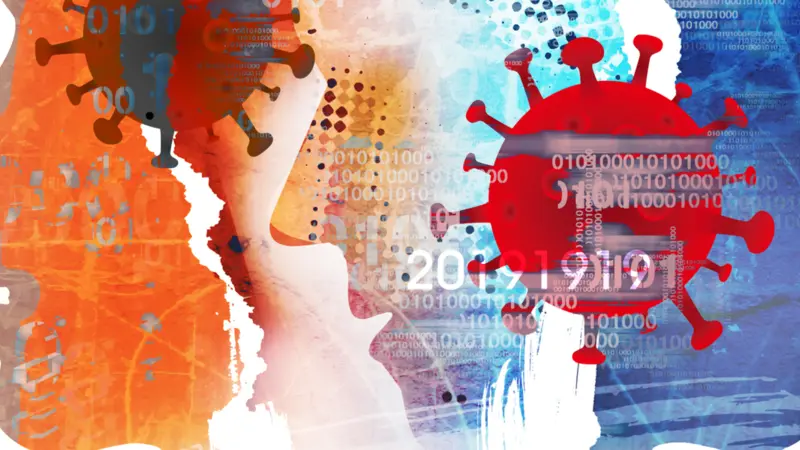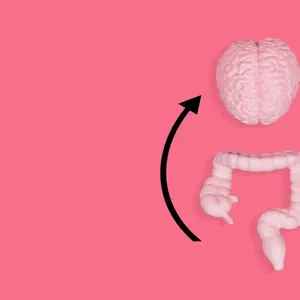

Mental and Behavioral Well-Being

Mental and Behavioral Well-Being
Amid Pandemic and Protests, Emerging Treatments Offer PTSD Sufferers New Promise for Healing
As the COVID-19 pandemic sweeps across the US and George Floyd’s murder sparks a widespread protest movement, many Americans are experiencing deep levels of trauma. For many, the stress and anxiety will gradually subside, but for others, the feelings will persist, leading to the often-misunderstood post-traumatic stress disorder (PTSD). In fact, some mental health experts predict that the disorder could very well be the next healthcare crisis facing society. New developments in care and treatment are reducing the incidence of misdiagnoses and creating hope for improving health outcomes.
Currently over eight million adult Americans suffer from PTSD, and an estimated 7% of the population will be diagnosed at some point in their lifetime. PTSD is associated with numerous life-altering events; although PTSD is historically associated with combat, the effects of trauma are not limited to military personnel. It can affect anyone at any age, including children, and women are two to three times more likely to experience the condition than men. Those with a past history of trauma or mental illness may be more vulnerable to developing PTSD. However, given these chaotic times, even people without trauma in their past are at risk for developing PTSD. In general, any life-threatening, dangerous, or harmful event can trigger its onset. A victim of a traumatic event may experience PTSD, but those who witness or indirectly experience the incident and its fallout are also vulnerable.
Women are two to three times more likely to experience the condition than men.
People who suffer a critical illness, such as COVID-19, are at a higher risk of suffering from PTSD. Research from 2018 states that as many as 27% of patients surviving a stay in the intensive care unit (ICU) may suffer from acute symptoms. If the ICU stay was due to a global pandemic like COVID-19, the risk may be even greater. Mitigation efforts for the virus require hospital staff to wear protective gear resembling hazmat suits—a frightening image for already scared patients. Most hospitals prohibit visitors during the pandemic, so hospitalized patients often endure their illness completely alone. A 2020 study of COVID-19 patients in China found that a staggering 96% of hospitalized or quarantined patients had symptoms of PTSD. Concerningly, it isn’t just the patients themselves who are affected. A 2009 paper in Health Psychology reported that 22.8% of parents whose children had chronic illnesses also displayed symptoms. Alongside suffering family members, healthcare workers who are caring for the sick and dying are at greater risk for PTSD, according to a 2020 report in Psychological Medicine. Research conducted in 2003 showed that 10% of healthcare workers experienced high levels of PTSD following the SARS outbreak.
A 2020 study of COVID-19 patients in China found that a staggering 96% of hospitalized or quarantined patients had symptoms of PTSD.
Symptoms of PTSD may develop immediately following a traumatic event, but sometimes they arise weeks, months, or even years later if triggered by new trauma. Manifestations are wide-ranging and may include flashbacks or nightmares, an inability to recall aspects of the event, heightened fearfulness or anxiety, feelings of shame or guilt, depression, emotional numbness, difficulty concentrating, and trouble sleeping. For an adult to be diagnosed with PTSD, symptoms in four categories must be present for at least a month and be severe enough to interfere with relationships or work. Some people recover within a matter of months, while others develop a chronic condition. For younger children, bed wetting, inability to talk, being unusually clingy, or acting out are common in sufferers. Older children, who may present in ways similar to those seen in adults, may also exhibit disruptive or destructive behaviors.
The social disruption around the Black Lives Matter movement is another source of trauma for many Americans. Graphic images of brutality, distressing personal experiences of systemic racism, health and safety concerns for the many protestors around the nation—all of these can exacerbate the anxiety and fears many are already carrying, particularly people of color. Jessica Graham-LoPresti, a clinical psychologist and assistant professor at Suffolk University, told National Geographic, “People of color experience a lot of symptoms in response to the frequency and pervasiveness of racism that mirror the symptoms of PTSD.” She notes that watching the distressing footage of recent events, like the killings of George Floyd and Ahmaud Arbery, is causing “a lot of hypervigilance, emotional responses of stress and anxiety, and feelings of helplessness and hopelessness.”
Proper diagnosis of PTSD is the first step to receiving effective treatment.
Medical historians note that the condition we now know as PTSD was recorded in history as far back as 3,000 years ago on Mesopotamian tablets inscribed with trauma symptoms of soldiers. In the 1880s, psychiatrists began connecting the condition with the brain. In World War I it was known as “shell shock” and in World War II, traumatized soldiers were said to have “battle fatigue.” It was not until 1980 that the condition was recognized as a formal diagnosis in the Diagnostic and Statistical Manual of Mental Disorders (DSM), published by the American Psychological Association.
Proper diagnosis of PTSD is the first step to receiving effective treatment. Groundbreaking research conducted in 2015 by a research team from Amen Clinics and scientists from UCLA, Thomas Jefferson University, and the University of British Columbia showed that brain SPECT imaging scans were able to differentiate PTSD from traumatic brain injury with a 94% accuracy rate, opening the door to more accurate diagnoses. Brain scans show that PTSD symptoms are caused by biological changes in the brain; these same scans can help personalize more effective treatments and show if it is working. Recognizing that PTSD is a brain disorder helps reduce the stigma among patients and loved ones, which improves understanding and reduces emotional pain associated with the diagnosis. As research gathers pace, there is hope that the chances of misdiagnosis and mistreatment will decrease.
Researchers are seeing reasons for optimism in treatment, noting the brain’s resilience in healing itself after traumatic events.
In recent years protocols have been evolving and becoming more personalized, along with the understanding that what works for one person may not work for another. A 2014 study of veterans with PTSD published in JAMA showed that mindfulness-based interventions improved symptom severity during treatment. Emotional Freedom Technique (EFT), a tapping technique that follows the meridian points used in acupuncture, was approved as a treatment by the US Veterans Administration in 2016. Eye movement desensitization and reprocessing (EMDR) therapy is also being used more widely. Enhancing overall brain health can improve outcomes, as can natural supplements, nutrition, exercise, and neurofeedback therapy.
A small, but growing, body of research suggests that psilocybin, the alkaloid in psychedelic “magic mushrooms,” may be medically beneficial for treating PTSD and other mental health disorders. At least four organizations in North America are currently working to expand treatment access to the chemical compound, which is currently illegal in the US. The Food and Drug Administration recently granted “breakthrough” therapy status to Compass Pathways, a company that is conducting the largest-scale clinical trial to date on psilocybin.
As the study of PTSD matures, researchers are seeing reasons for optimism in treatment, noting the brain’s resilience in healing itself after traumatic events along with the aforementioned improvements in diagnosis and developing personalized treatments. Learning coping strategies and seeking out support from other people is helpful in promoting recovery after trauma.
Mary Catherine McDonald, a historian of PTSD and assistant professor at Old Dominion University in Virginia, told National Geographic that we should not view PTSD as a dysfunction or a sign of brokenness. Instead, she says, “It’s the sign of the impulse to survive.”
REFERENCES
With gratitude to the KnoWEwell publishing team for the rigorous evidenced-based research, creative collaboration and commitment to building a WELLthier Living® World.
Amen Clinics. (2020, May 28). The next wave of the pandemic: PTSD. Retrieved from https://www.amenclinics.com/blog/the-next-wave-of-the-pandemic-ptsd/?
Amen Clinics. (n.d.) Post-traumatic stress disorder. Retrieved from https://www.amenclinics.com/conditions/post-traumatic-stress-disorder/?
Farah, T. (2019, February 7). Inside the push to legalize magic mushrooms for depression and PTSD. Wired. Retrieved from https://www.wired.com/story/inside-the-push-to-legalize-magic-mushrooms-for-depression-and-ptsd/
Hubbard, B. (2017, August 10). EFT “safe therapy” for army veterans with PTSD. What Doctors Don’t Tell You. Retrieved from https://www.wddty.com/news/2017/08/eft-safe-therapy-for-army-veterans-with-ptsd.html
Marcus, A. D. (2019, February 19). For parents of ill children, a growing recognition of PTSD. The Wall Street Journal. Retrieved from https://www.wsj.com/articles/for-parents-of-ill-children-a-growing-recognition-of-ptsd-11550577600
National Institute of Mental Health. (n.d.) Post-traumatic stress disorder. Retrieved from https://www.nimh.nih.gov/health/topics/post-traumatic-stress-disorder-ptsd/index.shtml
Polusny, M., Erbes, C., Thuras, P., Moran, A., Lamberty, G. J., Collins, R., Rodman, J. L., & Lim, K. O. (2015, August 4). Mindfulness-based stress reduction for posttraumatic stress disorder among veterans: A randomized clinical trial. JAMA, 314(5), 456-465. https://doi.org/ 10.1001/jama.2015.8361
Helpful Resources:
The National Center for PTSD, part of the US Department of Veterans Affairs, has targeted information on PTSD, with resources such as videos and an online app called PTSD Coach. www.ptsd.va.gov
The National Child Traumatic Stress Network focuses on child trauma and offers resources for many groups. www.nctsn.org
Amen Clinics is an outpatient clinic that offers brain SPECT imaging technology to help identify PTSD in the brain and a comprehensive brain-body approach to personalized treatment that involves the least toxic, most effective strategies. https://www.amenclinics.com/
Coping Space offers resources for families coping with PTSD and symptoms of medical traumatic stress. www.copingspace.org
National Institute of Mental Health conducts clinical research on PTSD. Join a study at https://www.nimh.nih.gov/health/trials/post-traumatic-stress-disorder-ptsd.shtml


 By
By







